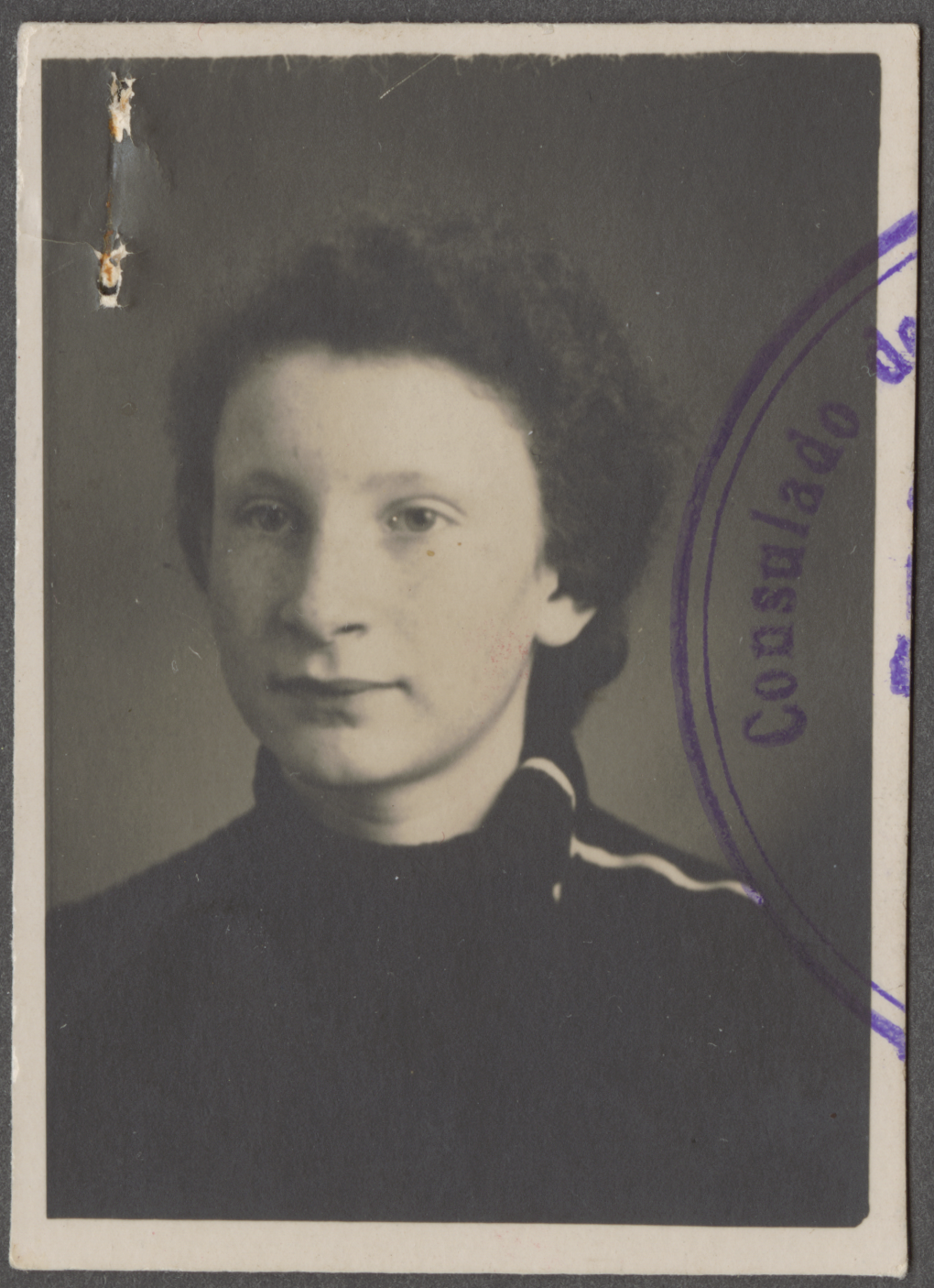
-
Learn More about Ruth
Ruth Kohn was born Ruth Arnoldi into an observant Orthodox family in Preussisch Friedland, Germany (now Debrzno, Poland) on August 23, 1927. Her father, Moses, was a butcher and a veteran of the First World War. Her mother, Margaritha, stayed home to care for Ruth and her older brother Lothar. Ruth’s oldest brother Ernst was institutionalized for epilepsy at a young age.
The Arnoldis lived peacefully in Preussisch Friedland for generations, but with rising antisemitism, the family relocated to Berlin in 1932. After the Nazis came to power in January 1933, Ruth experienced antisemitism at school, such as when a fellow classmate and daughter of a Nazi Party member called her “Saujude” or “Jewish pig.” Eventually, Ruth was forced to leave her school because she was Jewish. Ruth was enrolled in a Jewish girls’ school, where she learned knitting and cooking along with academics.
On the morning of November 10, 1938, Ruth stepped outside to begin her walk to school and noticed that the butcher shop just outside of her apartment had been vandalized. As she continued on her journey, she saw the synagogue next to her school burning and witnessed individuals throwing sacred Torah scrolls into the fire. This wave of violent anti-Jewish pogroms, which took place throughout Germany on the night of November 9-10, 1938, would come to be known as Kristallnacht. When the Arnoldis heard about the widespread arrests of Jewish men that took place in the wake of the violence, the family split up and hid for three days with other family members. After Kristallnacht, the regime enacted stricter regulations, designed to drive Jews from Germany and the German economy.
After World War II began with the German invasion of Poland on September 1, 1939, the Nazi persecution of Jews in Germany increased. The Nazi regime introduced new and increasingly onerous restrictions. For instance, they limited where Jews could live. As a result of these restrictions, Margaritha’s cousins moved into their apartment. The Arnoldis gave up their bedroom to their relatives and moved into the dining room to sleep.
Beginning in spring 1940, Jewish men (aged 18-55) and Jewish women (aged 18-50) in Berlin were required to perform forced labor. Margaritha and Lothar were forced to work in a battery factory. Ruth had to work in the local cemetery when school was out. In November 1940, the family received a letter saying that Ernst had died of a heart attack at a care home in Lublin in German-occupied Poland. In reality, he had been murdered by the Nazis in the regime’s “euthanasia” program probably at the Brandenburg euthanasia killing center. Beginning in September 1941, Jews were required to wear a yellow star of David on their clothing.
In late 1940 or early 1941 Ruth’s family received a letter from Ruth’s uncle, Bruno Kirstein, who had fled Germany to escape Nazi persecution. With help from the American Jewish Joint Distribution Committee in Lisbon, Bruno had secured passage to the Dominican Republic under the condition that he would perform agricultural work once settled. In the letter, Bruno offered to help the Arnoldis acquire visas to join him.
After months endeavoring to secure the proper paperwork from various German agencies, the Arnoldis received their visas. A German government official stood close by as the family packed their bags to ensure they did not include any items of value. He allowed them to take a set of silver candlesticks gifted to her parents on their wedding day, by claiming on official paperwork that they were in fact made of tin. They left in mid October 1941. They were among the last Jews able to escape Nazi Germany before the regime banned all Jewish emigration on October 23, 1941.
After weeks of travel, Ruth and her family arrived in the Dominican Republic on December 7, 1941, the day Pearl Harbor was attacked by Japan. The family then traveled to Sosúa, where the American Jewish Joint Distribution Committee had set up and funded a Jewish agricultural settlement.
In Sosúa, Ruth studied to become a nurse and met her future husband, a survivor from Austria, Dr. Herbert Kohn. After ten years, they moved to the United States so Herbert could pursue a career in child psychiatry. Her parents chose to remain in the Dominican Republic. Ruth enrolled in school and became a social worker. Ruth and Herbert have three sons. Ruth served as a volunteer at The United States Holocaust Memorial Museum.
